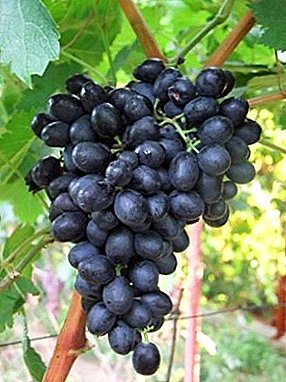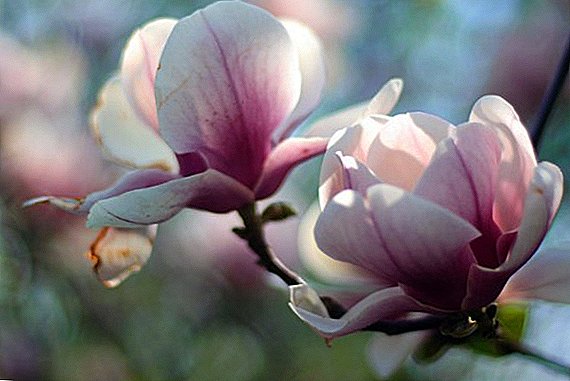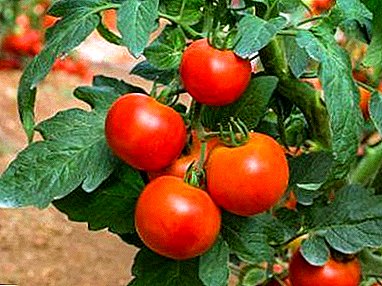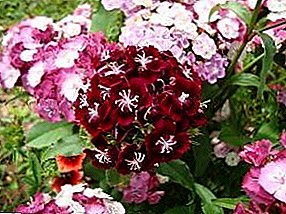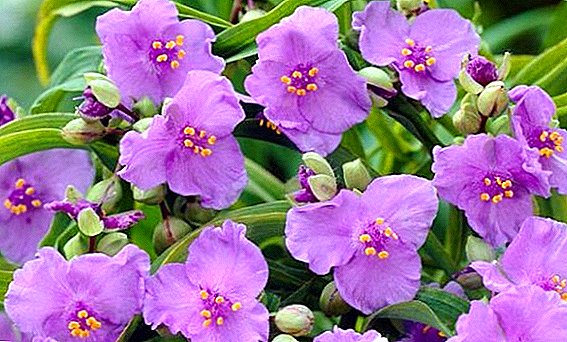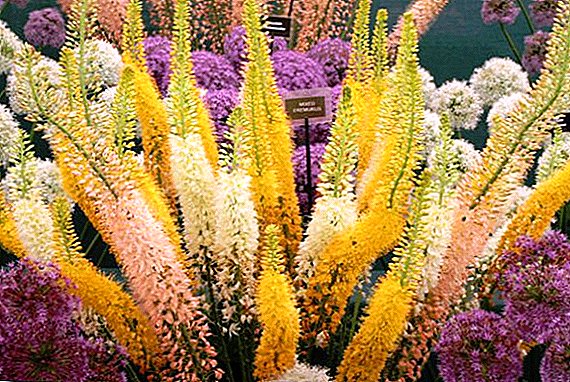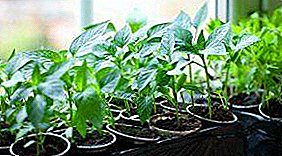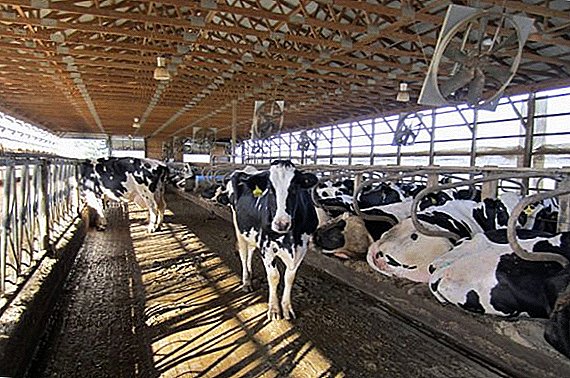 Those who have been to tropical countries must have seen these strange hairy fruits of red color the size of large nuts. Some even ventured to try them. You could also see it in large supermarkets. What kind of fruit it is and whether it is possible for people who live far from exotic to eat it, you will learn further.
Those who have been to tropical countries must have seen these strange hairy fruits of red color the size of large nuts. Some even ventured to try them. You could also see it in large supermarkets. What kind of fruit it is and whether it is possible for people who live far from exotic to eat it, you will learn further.
Botanical description
Rambutan (in Latin Nephelium lappaceum) is a tree of the genus Nephelium, Sapindovye family. This name was given to him because of fruits covered with hairs (in Indonesia, rambut is called hair). This tree is evergreen, that is, its leaves never turn yellow and do not fall. They are oval-shaped, arranged in pairs from 2 to 8 pieces on the same petiole, branches form a magnificent crown. The tree can grow up to 25 m in height and live up to 70 years.  The tree blooms with small flowers collected in clusters. Fruits twice a year, ripe fruit covered with raspberry peel, consisting of two halves and covered with hard red hair (sometimes with a green tinge) with a length of 1 cm, twisted at the ends. They look round or in the shape of an egg, about 5 cm in size, arranged with brushes about 25 pieces, resemble a chestnut.
The tree blooms with small flowers collected in clusters. Fruits twice a year, ripe fruit covered with raspberry peel, consisting of two halves and covered with hard red hair (sometimes with a green tinge) with a length of 1 cm, twisted at the ends. They look round or in the shape of an egg, about 5 cm in size, arranged with brushes about 25 pieces, resemble a chestnut.
Did you know? In Thailand, the word rambutan is also called people with black skin and short curly hair.
Spread
Rambutan is grown in Asian countries located in the territory between China, India and Australia: in Indonesia, Cambodia, the Philippines, India, Malaysia, Thailand, Indonesia, as well as in the countries of Central and South America located in the Caribbean, in Australia , Sri Lanka.
Learn what kivano, loquat, feijoa, kumquat, citron, okra, pepino, actinidia, zizifus, Adam's apple, guava, longan, papaya, lychee, mango and pineapple are all about.
Chemical composition
Rambutan fruits are rich in vitamin C and also contain vitamins B3 (PP), B2, B6, B5, B1, B9 (folic acid), A. In addition, these fruits contain potassium, iron, sodium, copper, phosphorus, manganese, calcium , zinc, magnesium. There is a lot of arachidonic and oleic acid in the pits. 
Energy value and calorie
According to the National Food Database of the United States Department of Agriculture rambutan contains per 100 g of product:
- carbohydrates - 20 g;
- proteins - 0.65 g;
- fats - 0.2 g;
- water - 78 g;
- Fiber - 0.9 g;
- ash - 0.2 g
Grow tangerine, fig and pomegranate at home.
Beneficial features
Due to its composition rambutan has such useful properties:
- strengthens the immune system;
- provides the body with collagen - a substance that makes tissue elastic;
- promotes the production of serotonin (the hormone of happiness);
- improves blood clotting;
- improves metabolism;
- stimulates the digestive, nervous and respiratory system;
- improves eyesight;
- relieves fatigue;
- useful for skin diseases.
 In folk medicine of tropical climates, fruits are used as an anthelmintic, for diarrhea; leaves - for the treatment of headaches, wounds, burns, recuperation, increase the amount of milk in pregnant women; root - at high temperature, stomatitis, gingivitis. Candles, soap are made from rambutan, fabrics are painted for them, and jewelery is made of wood.
In folk medicine of tropical climates, fruits are used as an anthelmintic, for diarrhea; leaves - for the treatment of headaches, wounds, burns, recuperation, increase the amount of milk in pregnant women; root - at high temperature, stomatitis, gingivitis. Candles, soap are made from rambutan, fabrics are painted for them, and jewelery is made of wood.Contraindications and harm
The use of fruit is contraindicated for people with a tendency to allergic reactions. In addition, you should not get too carried away with it, because the digestive system, which is unaccustomed to exotic, can not withstand the load, and this will cause frustration.
Important! Caution - rambutan raw bone is poisonous, but it can be fried and eaten.
How to choose
The skin of a ripe rambutan is red and slightly greenish hair; orange or green color indicates an unripe fruit. It should not be dark spots, rifts, darkened hairs. 
Storage conditions
This fruit does not like low humidity and temperature, loses its taste after 3 days. To extend the shelf life of up to 3 weeks, you need to provide a temperature in the room from 8 to 12 ° C, and humidity - up to 90%.
How to clean rambutan
The fruit of rambutan is squeezed by hands until a gap appears, then separated and freed from the peel. The peel is also susceptible to cutting with a sharp knife. Next, you need to remove a large chocolate-colored bone (unless it is a seedless variety).
The taste and smell of fruit
The flesh of the fruit is white or pinkish, reminiscent of the jelly in consistency. It is juicy, smells good, sweet and sour in taste, resembles white grapes with a hint of strawberries and raspberries. Roasted bone has the taste of an acorn.
Did you know? Thai people say rambutan has a taste of ambrosia (a treat that gives immortality to gods and does not allow it to age).Fruit can be eaten raw without additives, can be used for exotic salads or cook jam.
Estimated price
The price of rambutan in Thailand is about $ 1.23, and in the countries of the former USSR it can reach $ 21 per kilogram. 
Growing at home
Grow rambutan can be at home, observing the requirements of the soil and growing conditions.
Substrate and fertilizer
The soil for planting can be purchased at a flower shop and mixed with peat (for 3 parts of the soil 1 part of peat). Before planting, the soil must be well loosened. Twice a year, fresh loose soil is poured into a pot and fertilized. When a tree grows, it is transplanted into another pot with fresh soil.
Plant a pineapple in room conditions.
Bone preparation and landing
Only a ripe fruit bone is suitable for growing. It is carefully removed from the pulp, trying not to damage, wipe with a paper towel and leave to dry. Then a piece of cotton is dipped in water, squeezed, a bone is wrapped around it, placed in a container with a lid, and taken to a warm room for 2 weeks. During this time, the bone must germinate. If this does not happen, then you need another bone. Drainage is poured into a small pot at the bottom, then the soil bought in a store is lowered to a depth of 3 cm by a germinated bone and buried. The soil is watered regularly to prevent drying. The pot is covered with a film and placed at the window on the sunny side.
Important! For normal growth, rambutan is necessary to provide light for 12 hours a day.The first shoots should appear in a month, and after 2 more leaves will start to grow. Now it can be transplanted into a larger pot.
Watering and moisture
If a tree grows poorly, it means that it lacks moisture. It should be watered 2 times a day (in the morning and in the evening), and also spray the leaves from a spray bottle. At the same time it is impossible to allow stagnation of water in the pot. 
Temperature and care
In order to provide rambutan with normal conditions for growth, it is impossible to allow air temperatures to fall below +10 ° C, and it is better to observe at +18 ° C. Therefore, in the open ground in our conditions it can not be planted, but can be grown in a greenhouse.
Fruiting
Rambutan produces fruit twice a year - in July and December. If it is not vaccinated, it begins to bear fruit after 5 years. With grafted trees, you can get fruit in 2 years. The highest yield of rambutan begins after 8 years.  Thus, the use of rambutan for a person is manifested not only in its composition, but also in its ability to be used in the treatment of folk remedies. It has a very original look, so rambutan can decorate any greenhouse, if you decide to plant it at home. But be careful when using it, so as not to cause an allergic reaction.
Thus, the use of rambutan for a person is manifested not only in its composition, but also in its ability to be used in the treatment of folk remedies. It has a very original look, so rambutan can decorate any greenhouse, if you decide to plant it at home. But be careful when using it, so as not to cause an allergic reaction.


